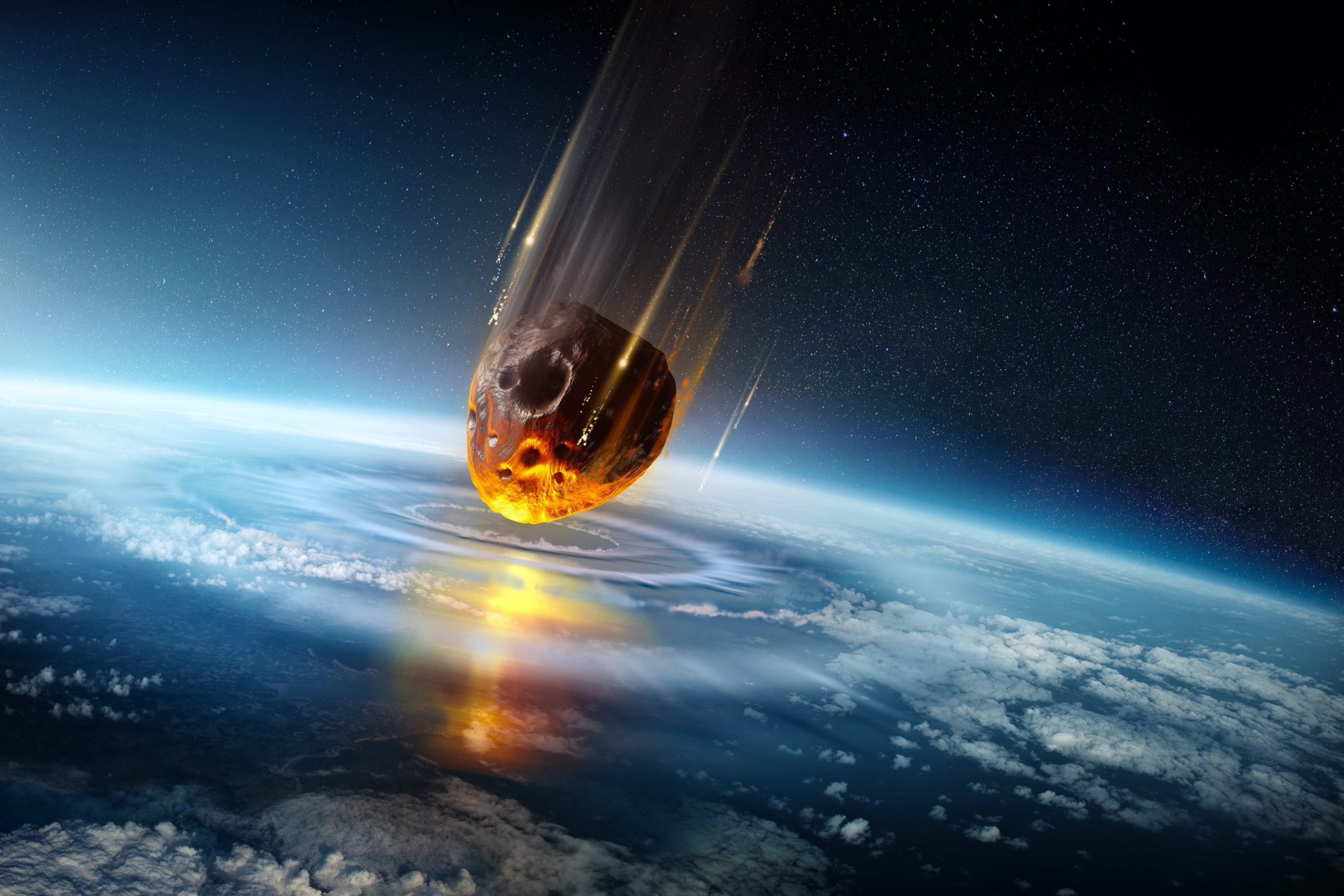
Researchers model airbursts, a common yet little-understood cosmic impact process
Earth is constantly bombarded by space debris, from the tons of cosmic dust that lands on the planet daily to rare, huge, dinosaur-killing asteroids that arrive from deep space every tens of millions of years. Somewhere between those two extremes are airbursts — explosions of space rocks, such as comet fragments, crashing into the Earth’s atmosphere. Occurring on timescales of years to centuries, these types of potentially destructive impacts are far more common than the dinosaur killers, yet for all their inferred frequency, they are relatively little understood.
“These impacts are not major crater-forming events,” said UC Santa Barbara emeritus earth scientist James Kennett. Unlike the meteorites that make direct contact with the earth, he explained, airbursts happen in the atmosphere and leave little evidence in the geologic record, such as distinct craters, for scientists to study. As a result, he added, the current evidence for a cosmic impact is based heavily on the measurements taken from the more extreme crater-forming events, in effect leaving out some of the subtler but potentially widespread evidence left behind by airbursts.
To fill that gap in our knowledge, Kennett and collaborators, in a paper published in the ScienceOpen journal Airbursts and Cratering Impacts, have taken steps to characterize in detail “touchdown” airbursts — during which the impactor explodes above ground with enough energy to propagate down to the Earth’s surface in the form of heat and shockwaves. These touchdown events that explode very close to Earth’s surface, according to the scientists, “are more common than large crater-forming events and hence are potentially more dangerous.”
For this paper, the researchers set out to model “low-altitude” (700 meters/766 yards or less above Earth’s surface) touchdown airbursts to determine what kind of effects — changes in airburst pressures, temperatures, shockwave speeds, visible material and bulk material failure — such an impact can produce. They tested their model against real-life data from violent above-ground explosions, such as the airbursts that occurred kilometers above Tunguska (1908) and Chelyabinsk (2013) in Russia, and the Trinity nuclear test explosion (1945) in New Mexico, which occurred roughly 31 meters (100ft) above ground. They ran multiple simulations involving asteroids and comets of different sizes.
“We produced hydrocode computer models of a Type II or touch-down airburst, which is that in which the high temperatures, high pressures and high velocity intersect Earth’s surface, producing meltglass, microspherules and shock metamorphism,” Kennett said. Minerals and metals that were molten and subsequently cooled serve as proof of the extremely high pressures and temperatures that could occur with above ground explosions, no major crater needed. Enough explosive energy could be released that shallow, superficial craters actually could have been made that may have since eroded away, Kennett added.
The models also demonstrate how the pressures can generate shock metamorphism — cracks — in quartz. The “crème de la crème” of impact proxies, quartz that has been shocked by a crater-forming impact will typically exhibit straight, parallel cracks, he said. With relatively lower-pressure airbursts, the researchers contend, there are fewer parallel cracks and more weblike patterns.
It's important to note, they added, that there are a multitude of possibilities involved in airbursts, including the comet’s or asteroid’s size, distance from the ground, angle of approach, number of impactors and others, so the modeling here does not represent every possibility. But it could serve as a jumping-off point for considering airburst events that have been proposed for locations that exhibit similar collections of meltglass, shock fractured quartz and microspherules. These include the Chrudim/Pardubice strewnfield in the Czech Republic; the Chiemgau district of southeastern Germany; a section of the Atacama Desert in Chile; and the Younger Dryas Boundary, a strewnfield distributed over much of the northern hemisphere and parts of the southern hemisphere, hypothesized to be the result of a fragmented comet that slammed into the Earth’s atmosphere 12,800 years ago.
Revisiting Tall el-Hammam
In another recently published paper in the same journal, the collaborators set their model onto Tall el-Hammam, the site of a Bronze Age city near the Dead Sea of great interest to archaeologists and biblical scholars because of cultural evidence dating back thousands of years. Tall el-Hammam previously caught the researchers’ attention because of a 1.5-meter interval of material in the Middle Bronze Age (3300-1200 B.C.E.) layer that included meltglass on pottery shards and partially melted building materials — evidence of temperatures and pressures far beyond what could have been created by man at that time — in addition to shocked quartz. The soil in that layer was also found to contain high concentrations of salt, suggesting an impact that may have partially hit the Dead Sea, pushing its highly saline waters onto land.
In addition to impact proxies collected at the site, the researchers’ hydrocode modeling bolsters the case that an airburst is the cause for that layer of devastation in the geologic record, by demonstrating how an airburst could have caused the necessary forces to produce those proxies, as well as the patterns of distribution of debris. “In the case of Tall el-Hammam, the blast wave demolished the whole city, along with a three-story palace,” Kennett said.
The layer of widespread destruction in the geologic record has fueled debate as to whether Tall el-Hammam was the biblical Sodom and Gomorrah, two cities in the Book of Genesis that were destroyed in a rain of sulfur and fire for their wickedness. There is no way to prove that, Kennett said.
What the modeling and the evidence does strengthen is the idea that the destruction of Tall el-Hammam was due to an airburst. While natural phenomena such as flood and earthquakes could be responsible for some of the city’s destruction characteristics, and others can be explained by human causes, such as city fires and warfare, only an airburst could account for all of them, according to the paper. An airburst at Tall el-Hammam, the researchers conclude, could “produce the conditions necessary to melt pottery, produce meltglass and microspherules, form breccia, demolish the city’s buildings, disperse the debris directionality across tens of meters and generate shock metamorphism and crater formation.
“We argue, therefore, that a cosmic touchdown airburst is the only plausible explanation for the evidence at Tall el-Hammam.”



